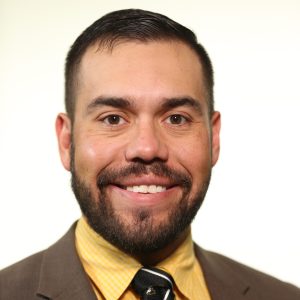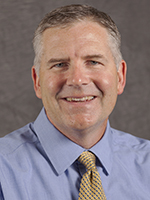Animal Sciences

Nov. 15, 2017
Cinda Mason

Nov. 15, 2017
Jason Dowell

Nov. 15, 2017
Rick Disselhorst

Nov. 15, 2017
Tina Carmack

Nov. 15, 2017
Addison Byrne

Nov. 14, 2017
Amber Neely

Nov. 13, 2017
Eric Bailey
Eric Bailey is an Associate Professor and State Beef Nutrition Specialist at the University of Missouri. Bailey holds a Ph.D. in Beef Cattle Nutrition from Kansas State University. Bailey leads applied research on backgrounding and stocker cattle, with an emphasis on management of them on tall fescue pasture systems. Bailey leads the MU Extension Feedlot School program, is co-coordinator of the Missouri Grazing Schools, and the co-director of the Forage-Livestock Program of Distinction. Educational background Ph.D., Kansas State University…

Nov. 10, 2017
Thomas Spencer
Spencer’s laboratory seeks to define critical physiological and genetic pathways that regulate uterine development, function, and regeneration in order to improve reproduction and health of women and animals. His earlier work established that the glands of the uterus are essential for embryo survival and growth using the ovine uterine gland knockout model. Subsequent research revealed fundamental aspects of postnatal uterine development and uterine receptivity as well as illuminated the evolutionary biology and functional role of endogenous retroviruses in placental development. Current research foci in his lab include: cellular and molecular mechanisms governing development of the uterus; maternal and paternal regulation…

Nov. 10, 2017
Christine Elsik
Educational background Ph.D., Genetics, Texas A&M University Courses taught AN_SCI/PLNT_SCI 8430: Introduction to Bioinformatics Programming…

Nov. 10, 2017
Jared E. Decker
IDENTIFYING LOCI RESPONDING TO SELECTIONIn 2012 Decker published a method, now called Generation-Proxy Selection Mapping, to identify loci responding to current selection. In this analysis, birth date (as a surrogate to generation number) is fit as the dependent variable in a mixed model equation. Variants that have changed in frequency rapidly due to selection are strongly associated with birth date, thus the method identifies regions under selection. The mixed model equations correct for demography, relatedness, and population structure within the data. We have previously used this method in Angus cattle using approximately 45,000 SNPs. In 2021, Decker’s group published…